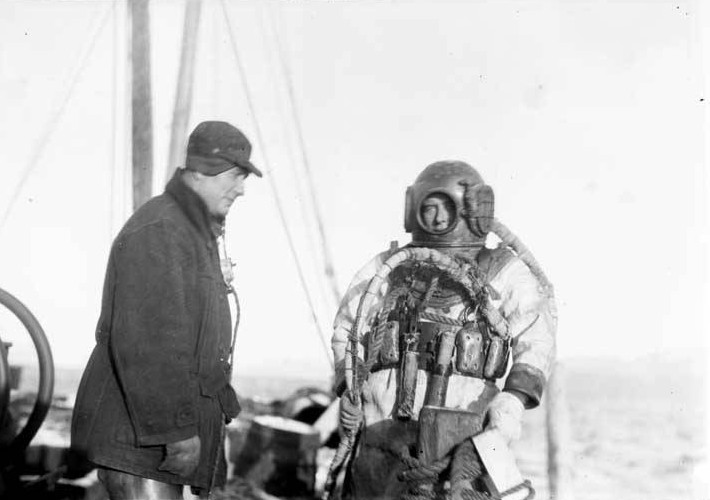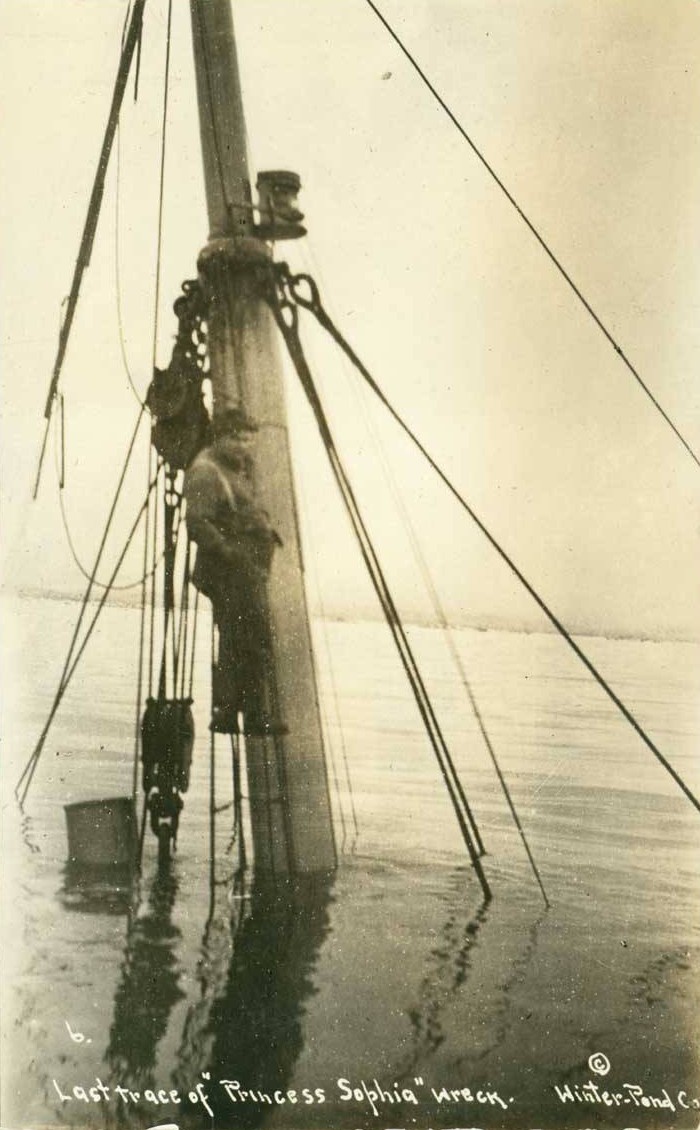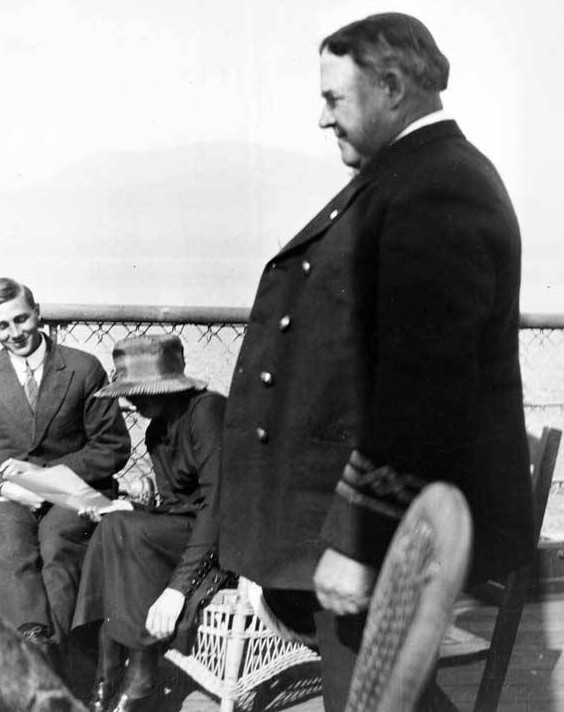
Imagine yourself as a historian who is researching an event that may’ve occurred seventy or even a hundred years ago. You’re searching for records or something that documents the people, things, and events that are part of that historic moment. Those documents may exist, but they may be scattered or misplaced.
That’s what historians and authors Bill Morrison and Ken Coates faced when they started researching the Princess Sophia disaster off Vanderbilt Reef near Juneau from Oct. 23 to Oct. 25, 1918. The disaster claimed the lives of all aboard the steamship, at least 343 and as many as 356 passengers and crew.
They had a breakthrough with their research when they found court records for a class action suit that started in Seattle.
“This was our best discovery, because originally we just going to write a paper on it,” Morrison explained during a recent interview with KTOO.
The great thing about it was, that in order to launch a class action suit, they had to provide a biography of the deceased. So what we had were 200, two- or three-page mini-biographies of the people who down on the Sophia.”
In an archived interview with KTOO, Coates said he was surprised to learn of the tragedy as an undergrad. He then spent years tracking down material about the disaster from all over the West Coast.
The case was then appealed down to (U.S. Ninth Circuit Court of Appeals in) San Francisco. And when I went down to San Francisco, I got these archival boxes that had never actually been opened since the time of the court hearings in the 1930’s when they finally wrapped up. Somebody had bundled all this material in the 1930’s, tied it all together, stuffed it in boxes. It hadn’t been touched, at that point, for more than fifty years.”
Coates said the story broke wide open after they combed through those old court records.
You start to realize that not only do you have an interesting story that’s worth telling and might actually make people interested in the history of the North, but you’ve also entirely by happenstance stumbled upon a story that’s incredibly revealing about life in the far Northwest in the period around and after World War One.”
Coates said a Canadian commission of inquiry meeting in Vancouver, Victoria, and Juneau eventually chalked up the disaster to “perils of the sea” rather than a specific finding of guilt or responsibility.
The Royal Commission and commissions of that sort in Canada have a non — sort of — legal function. And, in fact, in Canada they tend to be used as a way to deflecting longstanding and serious evaluation of issues.”
It’s a complicated story. It doesn’t have an easy villain. It’s human error as opposed to malfeasance that accounts for the disaster.”
Coates and Morrison later went on to write The Sinking of the Princess Sophia: Taking the North Down with Her.

Legal aftermath
Coates and Morrison also found that the judge’s ruling on the Princess Sophia case was based on a now-162-year old law capping liability for marine corporations. Families of victims receive virtually nothing from damage claims, while the companies are still able to collect insurance on their rig or vessel.
Canadian Pacific Railway, the Princess Sophia’s owner and operator, resisted in British Columbia courts to pay workers compensation for the crew’s families. Families finally got it in the form of a very small monthly pension, but they were barred from suing for further damages.
The passengers’ principal lawsuit started in U.S. courts since the disaster happened in the Territory of Alaska, or U.S. waters.

Fourteen years after the disaster, the U.S. Ninth Circuit Court of Appeals upheld the lower court and the U.S. Supreme Court declined to hear the case. CPR eventually settled for $643.50, or less than two dollars for each life lost on the Princess Sophia, while the company got a $250,000 from the ship’s insurer.
A U.S. District Court judge found that CPR was negligent in the disaster and owed nearly $2.5 million to the crew and passengers’ families and a $1 million for their lawyer’s fees. But that same judge reversed himself less than two weeks later and ruled that CPR’s liability was capped under the Limited Liabilities Act of 1851. The company was liable only for the total passenger fares, freight fares, and baggage.
A 1963 article in the Stanford Law Review traces the origins of marine liability limits to a 17th century Dutch jurist Hugo Grotius who opined that “men would be deterred from employing ships, if they lay under the perpetual fear of being answerable for the acts of their masters to an unlimited extent.”
The author of the Stanford article, Walter Eyer, then explains the evolution of the American variation on the English system, or essentially “the owner may limit liability to the value of the vessel and pending freight.” The 1851 law was initially drafted to help American shipping stay competitive as other countries already had liability limits in place.
The act was invoked in the Titanic case and Eyer also cites applications in the Princess Sophia and Morro Castle cases. He suggested with modern-day marine insurance that such a law is obsolete and overdue for an overhaul, but it will likely never be tackled.

The Limited Liabilities Act of 1851 was the same law that Transocean referred to in its initial request to cap liability at $27 million from the Deepwater Horizon disaster in the Gulf of Mexico over three years ago. The company said that was the current value of the oil platform and cargo.
(Author’s note: A big hat tip for part of this story goes to Seattle-area writer and former television journalist Bob Simmons. He made the Princess Sophia-Transocean connection in an article How evading oil spill liability is helped by a Seattle tragedy that was published in the online magazine CrossCut.com in June 2010.)
Other recent stories:
